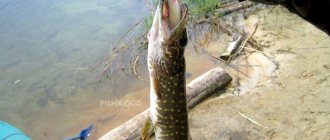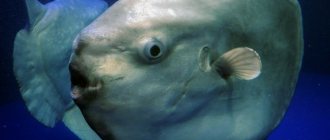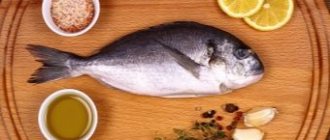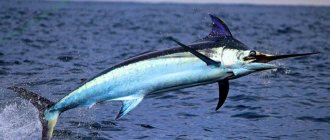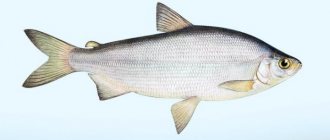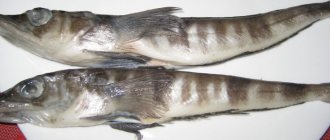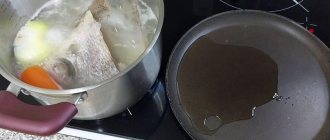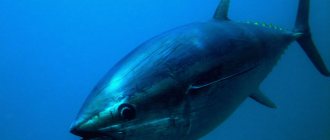“He who eats puffer fish is a fool, and he who does not eat it is an even greater fool.” This Japanese folk proverb literally describes the attitude of the indigenous people towards their deadly delicacy. And foreigners visiting Japan are willing to pay crazy amounts of money to experience the dangerous balancing act between life and death. They say that once you try this fateful dish, you become attached to it forever. Thrill-seekers are not deterred even by the fact that every year about fifteen people die from eating this fish. To experience the narcotic effect of fugu, you need to shell out about $1,000 in a specialized restaurant in Japan, where you will have to put your life in the hands of a professional chef.
a brief description of
In fact, fugu is the name of a traditional dish that is so valued in Japan. And the fish, which is now also called, is the brown rocktooth. You can often hear such names as: dog fish, pufferfish, fahak, diodont. This is a relatively small fish of the pufferfish family. The length of its body can reach 80 cm, but usually it is about 45 cm. This fish does not have scales as such. Instead, fugu has thin, light skin that has the ability to stretch. This structure is not accidental - this is how the rock tooth protects itself from predators. The thing is that in moments of mortal danger, the fish absorbs a decent amount of water and swells, forming a ball completely studded with sharp spines. If suddenly some shark dares to dine on this fish, the swollen, prickly ball will easily get stuck in the throat, and the ill-fated predator will die.
Content:
- a brief description of
- Habitat and reproduction
- A little history
- Composition and beneficial properties
- Use in cooking
- Application in medicine
- Dangerous properties of fugu fish
- Symptoms of poisoning and first aid
- conclusions
But the worst thing about this fish is not its appearance. Her skin and internal organs contain a deadly poison - tetrodotoxin. This is a neuroparalytic poison that begins to act in the human body approximately 10 minutes after ingestion. There is no antidote for this toxin and, unfortunately, in most cases of poisoning a person cannot be saved.
Interestingly, the fugu fish itself is not initially poisonous. Dangerous poison begins to accumulate in it during life. It enters the rocktooth along with food, which consists of various organisms containing small amounts of tetrodotoxin. Once in the body of a puffer fish, it settles in the liver and ovaries and, with the help of the bloodstream, transfers it to the eggs, intestines and skin, making it one of the most poisonous fish on the planet. This powerful neurotoxin has harmful effects even in small quantities. For a person to die, only one milligram of tetrodotoxin will be enough. Each fugu fish contains enough neurotoxin to kill dozens of people.
Addition to the article about the rabbit fish
The picture, taken from the Greek Internet, clearly shows the very characteristic “rabbit” nose of the fish. Thanks to him, the fish got its name and cannot be confused with any other:
Here is a leaflet issued in Greece. The leaflet says:
"Ministry of Agriculture and Food Development
Attention!
Poisonous fish.
Not edible"
Another version of the leaflet in the photo on the left, this time taken from the English site. In English, in particular, it is written that “ the fish has toxic skin and the poison does not decompose during heat treatment. Do not eat fish soups unless you are 100% sure that the fish is edible!”
And now the most important thing. A wide campaign is being carried out in Cyprus and Greece, the goal of which is to convey to every fisherman how dangerous this fish can be. But at the same time, I have repeatedly heard and written to me that rabbit fish is quite edible and they call it chicken fish . But in all the cases known to me, the fish was carefully cut, removing its skin. Which, in principle, agrees well with the information from the English-language site given a little higher. So, whether or not to eat or not eat fish, everyone decides for himself.
On August 22, 2012, the Fisheries Department visited. On the wall hangs a “portrait” of an ill-fated fish, either a rabbit or a chicken. When asked whether the fish was poisonous, the answer was not very clear. In general, either some organ is poisonous, or the toxicity of the fish depends on the season. But from which season and which organ exactly is unknown. Or maybe it’s not poisonous at all. What is certain is that:
- There are a lot of fish.
- It is industrially caught and destroyed. The state pays 3 euros for each kilogram.
- There are people who ate it and survived.
So to be or not to eat or not to eat fish, rabbit, chicken, everyone decides for himself!
Habitat and reproduction
This fish loves the coastal areas of the brackish waters of the Pacific Ocean. It is widespread in the Sea of Okhotsk, in the waters of the Japan, East China and Yellow Seas. Adult fish are found at a depth of no more than 100 meters. The fry can also be seen at the mouths of brackish rivers, and as they mature, they move further from the coasts into the open seas. Puffer spawns in the spring, attaching eggs to rocks in quiet places at a shallow depth of about 20 meters. Skalozub is a shallow-water fish; it loves small sea bays and calm waters.
Keeping in an aquarium
Aquarium tetraodons may be toxic, but their venom is non-lethal
Aquarium tetraodons are a whole range of both marine and freshwater needletails. The most desperate aquarists keep poisonous puffers, but non-toxic ball fish will decorate any aquarium. Home-raised fish will not be lethal, yet they can all be toxic.
To avoid poisoning of aquarium tetraodons, you should not feed them by hand, much less pick them up with your bare hands!
The fish are very beautiful and unusual, but caring for them is extremely difficult, as is the character of the ball fish itself. Having decided to breed such pets, you need to immediately think about their diet. It should contain snails with a hard shell for grinding down rapidly growing dental plates.
As with breeding other aquarium inhabitants, the main success factors will be:
- container of the correct size;
- healthy diet;
- compatible neighbors.
Their lifespan in an aquarium is half as long as in natural conditions. Your pufferfish can live between 5 and 10 years. The average length of an adult aquarium inhabitant is 15 cm.
Aquarium
The main thing in keeping an aquarium tetraodon at home is to provide it with a comfortable bottom.
Young fish can be kept in containers of about 50 liters; as the size of the fish increases, they need to be moved to an aquarium of 150 liters or more. If more than 5 adult individuals are kept at the same time, the volume should be increased. If there is one pair of adults and there are few fry, a 100-liter container will be enough. A large group of Tetraodon will feel comfortable in a 300 liter aquarium.
Water needs aeration and filtration. Fresh water is salted with table salt: 1 tbsp. l. for 20 liters of water. Young animals tolerate freshwater conditions well, but diseases may subsequently arise.
The bottom must be wide so that such large bottom-dwelling fish can swim freely. Tetraodons love shade; to create it, stones of different sizes are laid out on the sand, and the rest of the area is densely sown with aquatic plants.
Care and feeding
The comfortable water temperature range is 25–28 degrees.
Recommendations from experienced fish farmers for caring for pufferfish:
- mandatory aeration and filtration;
- daily replacement of 1/10 of the water in the aquarium with fresh water;
- separation of freshwater and marine tetraodons into different containers;
- isolation of fry in a separate container.
Healthy food for adults:
- bloodworms, worms;
- shellfish and fry;
- crustaceans with a hard shell;
- tubifex;
- coretras.
Minced beef, liver, and heart are also suitable for these predators. Tetraodons are not interested in green food, and dry food is contraindicated.
Diet for fry:
- ciliates;
- Daphnia;
- Artemia nauplius;
- Cyclops;
- egg yolk.
Neighbours
The older the tetraodon is, the higher the risk that other aquarium inhabitants will seem quite appetizing to it. Therefore, the issue of compatibility of these large predators with their neighbors must be resolved in advance. The ideal option would be a separate aquarium for pufferfish. If this is not possible, African or Malawian cichlids will be optimal neighbors. It is advisable to select neighbors of the same size and not to place fish with long fins and tails with tetraodons. In the latter case, there is a risk that adult predators will nibble on this luxury.
Reproduction in an aquarium
At the age of 1–3 years, fish are ready to reproduce. To do this, a pair of tetraodons or a male with several females are placed in a separate aquarium. The female differs from the male in having less bright spots and smaller size. The most successful spawning will be provided with dense vegetation; cryptocoryne and hornwort are most often used.
In the preparatory period, the water temperature must be increased and intensively fed with crustaceans and meat products. Courtship is clearly visible, it looks like a persistent pursuit of a male by a female and even biting if he is ignored for a long time. If the couple sank to the bottom, the female’s answer is positive, and together they will find thicker bushes for themselves. Within 1 minute, eggs are laid, sometimes remaining free floating. It is advisable to collect all the eggs and move them to another container, but with the same composition of water. Milky eggs must be removed immediately; they are not viable.
After 8-9 days, the fry appear, which need to be fed with egg yolk for 2-3 days, after which they can be switched to a regular diet for babies.
A little history
In different countries, this fish is called differently: in England - spherical, or balloon fish, in Spain - boteta, in the Hawaiian Islands - maki-maki, and in Japan the most famous fish is fugu.
This fish has been known for quite a long time. Mention of it was found in ancient Egypt: one of the drawings found on the tomb of the pharaoh of the Ti dynasty was very reminiscent of a fugue. Somewhere at the same time, Eastern sages wrote in their chronicles about its terrible poison. The very first Chinese medical book, “The Book of Herbs,” written around the third millennium BC, also contains information about puffer fish.
In Japan it has been known and appreciated for a very long time, but in Europe it became known in the 17th century, thanks to trade relations with eastern countries. The Dutch physician Engelbert Campher, while in Japan at the end of the 17th century, mentioned that some fish, when consumed, contain a lethal dose of poison, but this does not prevent the Japanese from eating it, throwing out the entrails and thoroughly washing the meat. He also talked about how Japanese soldiers were subject to serious sanctions for eating this fish. And if one of the warriors died from fugu poisoning, then his son lost all the rights and privileges of his father entitled to him by law.
The famous captain James Cook also suffered from this fish. During his trip around the world, he landed on one of the islands, where one of the crew members exchanged a strange unknown fish from a native. It was decided to cook it for dinner. By this time, two guests were invited to the ship, who were supposed to describe and sketch the find. This took quite a long time, so the captain and the guests barely touched the food they served. They were incredibly lucky, since they served the liver and caviar of puffer fish, which contain a colossal amount of tetrodotoxin. They escaped with a slight fright: weakness, loss of consciousness, slight numbness of the limbs. But one of the crew members who ate the entrails was not so lucky. In the morning he was found dead.
By the way, not so long ago, in Japan there was an old unspoken law, the essence of which was that if a cook prepared a dish that poisoned a visitor, he was obliged to eat it himself or commit ritual suicide - the so-called seppuku or hara-kiri.
Description and origin of the species
Fugu prefers to swim along the bottom.
Initially, the fish had the name “brown rockfish,” but the dish prepared from it, “fugu,” became so popular that it gradually began to be associated with this underwater inhabitant. The species belongs to the pufferfish and belongs to the genus Takifugu. The latter is divided into 26 subfamilies.
It is not known exactly when the first puffer fish appeared.
The oldest remains found so far are more than 12 thousand years old. The first mention of the creature is found in Japanese sources written in the 720s. Interesting fact : after a large-scale poisoning in the 1500s, cooking fugu was banned in Japan. It was allowed to be used for food only 200 years later.
Composition and beneficial properties
In terms of its chemical composition, fugu is practically no different from other representatives of this class. It contains a wonderful vitamin and mineral complex. Its energy value is approximately 108 kcal. It contains protein that is easy for the body - 16.4 grams, and about 2 grams of fat.
The neurotoxin contained in it in huge quantities is used in medicine to prevent certain diseases and have a long-term analgesic effect.
Despite the deadly poison in its composition, this fish is in great demand for culinary purposes. Those who like to “tickle their nerves” shell out considerable sums to try this unsafe dish.
At the moment, there is an artificially bred species of fugu that does not contain a dangerous toxin. But she is not at all popular. The most valuable things about it are the thrill, the emotional outburst and the huge surge of adrenaline that accompany eating fugu. Some even consider eating such fish a kind of Russian roulette.
Population and species status
In the Takifugu family, 24 species boast high numbers. Only Takifugu Chinensis and Takifugu plagiocellatus are experiencing population problems, and the former may even disappear altogether. Now people are taking appropriate measures to preserve these species.
Since fugu has virtually no natural enemies, the fish can easily increase its population. And only a person can influence it by catching representatives of the species. However, fugu successfully compensate for losses.
Use in cooking
In 1958, Japan passed a law stating that a chef who plans to work with puffer fish must have a special license. To obtain it, the applicant must pass two exams: theory and practice. A larger number of candidates are eliminated after the first stage. To successfully complete it, you need to know everything about the different varieties of pufferfish and remember all the known detoxification methods. To pass the second stage and obtain a license, the chef must eat the dish he has prepared.
Cutting fugu is a delicate and jewelry art that only a few master. To do this, you need to cut off the fins with quick and precise blows, separate the mouthparts and use a sharp knife “want” to open the belly of the puffer. Then, carefully so as not to tear, remove the poisonous entrails and dispose of them. After filleting, the fish is cut into thin transparent slices and washed thoroughly under running water to get rid of traces of blood and poison.
A set lunch in such a restaurant consists of several dishes. As a cold appetizer, fugusashi is served - a unique dish of the thinnest mother-of-pearl slices of fugu, laid out in the form of intricate patterns: butterflies, birds, and so on. They are eaten by dipping in ponzu (a specially prepared sauce with vinegar), momiji-oroshi (grated Japanese daikon radish) or asatsuki (finely chopped chives). After this, the first dish is brought - fugu zosui. This is a soup made from boiled fugu and rice with the addition of raw egg. The second course consists of fried pufferfish.
Serving fugu fish dishes also has its own sacred ritual. So, for example, the less poisonous back pieces are served first, moving closer and closer to the most poisonous part of the fish - the belly. The cook must monitor the guests, assessing their condition also from a medical point of view, in order to stop possible consequences in time and not allow them to eat more than the norm.
The superiority and skill of the cook lies in leaving a small dose of poison in the fish, at which restaurant visitors experience something similar to drug intoxication and fall into a slight euphoria. Those who have tried this treat report that in the process of eating such a dish, a slight paralyzing effect is felt, which is reflected in a slight numbness of the arms, legs and jaws. It lasts literally a few seconds, but during this time, a person experiences a storm of emotions, balancing on the edge of life and death. They say that many who have at least once experienced these feelings are ready to risk their lives to repeat this moment.
And a drink is made from the fins of the pufferfish, after which all the senses are heightened, a hallucinogenic effect and mild intoxication are manifested. To do this, charred fugu fins are dipped in sake for a minute. Visitors are required to drink this drink before eating deadly fish dishes.
Cooking technology
The product preparation process includes 30 consecutive steps . Violation of at least one stage will result in the loss of the license. When cutting, a special knife is used.
The cooking process is as follows:
- Killing a live fish with one blow to the head (use a special hammer).
- Removal of poisonous parts.
- Dividing the fillet into thin pieces.
- Rinsing with water to remove blood and toxic substances.
- Placed for storage in a special container.
When processing fish, be sure to pay attention to the structural features of a particular specimen. The location of the poison-containing parts may vary. Biologists are confident that even very experienced professionals face difficulties in identifying poisonous parts, so the joint work of several people is required.
Fugu sashimi – a kind of Russian roulette
Application in medicine
Several centuries ago in the East, powdered fugu was mixed with other animal ingredients and taken as a pain reliever. The patients soon recovered, their vigor and high spirits were noted.
Ancient healers in the old days often used the following recipe to treat patients: the poisonous insides of the fugu were soaked for seven days in vinegar, then mixed with flour and honey. Small balls were rolled from this mixture. They were prescribed for diseases such as:
- leprosy;
- mental disorders;
- heart failure;
- cough;
- headache.
In very small doses, fugu venom was used to prevent age-related diseases, to treat the prostate gland, arthritis, rheumatism, neuralgic pain, and also as an anesthetic for inoperable forms of cancer. The standards for the neurotoxin were clearly established, at which its toxic properties were practically absent, and its medicinal qualities came to the fore.
Currently, tetrodotoxin is practically not used for medical purposes due to its extreme toxicity. It is much safer to use novocaine, which has similar properties, or other anesthetic drugs for such purposes. Tetrodotoxin has recently been tested in a laboratory as a pain-relieving drug for cancer patients, but the results have been controversial. Currently, research on tetrodotoxin in this area continues. Widely used to study cell membranes by biological scientists.
Tetrodotoxin poisoning
The most common cause of intoxication is the intake of poison from food. There are both isolated cases and mass poisonings of seafood containing tetrodotoxin. For example, a group attack by this poison occurred in Bangladesh in 2008, and in Israel in 2005 and 2008.
Upon entering the body, the poison is quickly absorbed through the gastric mucosa and enters the bloodstream. The main point of action of tetrodotoxin is the ion channels of cells of the peripheral nervous system and skeletal muscles. This causes the symptoms of poisoning.
Under the influence of tetrodotoxin, impulse transmission ceases, which immediately affects the functions of the muscles and peripheral nervous system. Blockade of neuromuscular conduction is accompanied by respiratory and circulatory disorders, manifested by severe hypotension and hypoxia - insufficient oxygen supply to body tissues.
Metabolism of tetrodotoxin occurs quite quickly. It is excreted primarily by the kidneys. Within two to four days the body is completely freed from the poison.
Symptoms
The clinical picture of tetrodotoxin poisoning appears during the first six hours after food containing a toxic substance enters the body. Based on the severity of symptoms, four groups are distinguished.
- A mild degree of intoxication is characterized by perioral numbness and paresthesia - itching, burning, a sensation of crawling throughout the body. Gastrointestinal disorders - excessive salivation, nausea, vomiting, diarrhea, abdominal pain, may or may not be present.
- Moderate tetrodotoxin poisoning causes muscle twitching, numbness of the tongue, face and other areas of the body, and slurred speech. Discoordination of movements and early motor paresis may be observed.
- Severe poisoning is accompanied by generalized flaccid paralysis, respiratory failure, aphonia (inability to speak), and difficulty swallowing. Dilated, fixed pupils are observed. However, the patient is conscious.
- Tetrodotoxin poisoning of extreme severity is characterized by severe respiratory failure, accompanied by hypoxia, hypotension, bradycardia, and cardiac arrhythmias. Due to the combined effect of these factors, the patient may lose consciousness. Such cases often end in the death of the victim.
The severity of poisoning depends on the amount of tetrodotoxin entering the body and the duration of its action. There is also a relationship between the severity of intoxication and the general health of the patient before the accident.
Diagnostics
There is always a correlation between the symptoms of the disease and previous consumption of seafood. Absorption of tetrodotoxin occurs quickly, so the first signs of poisoning may appear within 10–60 minutes.
Clinical manifestations of the disease are typical, with symptoms of neuromuscular lesions.
Chromatographic and mass spectrometric examination of blood and urine reveals the presence of tetrodotoxin. The poison is detected in the blood within 24 hours. It can persist in urine for up to four days after the incident.
Thus, the diagnosis of tetrodotoxin poisoning is based on the analysis of anamnesis data, features of the clinical picture and laboratory test results.
First aid
If you suspect tetrodotoxin poisoning, you should rinse your stomach as quickly as possible with regular boiled or lightly salted water (similar to saline). First, they try to induce vomiting by pressing on the root of the tongue. Then the victim drinks 2-3 glasses of water and his gag reflex is again stimulated. Absorption of tetrodotoxin through the gastric mucosa occurs very quickly, so within an hour after consuming the poison, rinsing becomes ineffective.
An effective first aid measure is the oral use of activated carbon, which is a poison sorbent. Even delayed use of this drug brings a noticeable therapeutic effect. Since tetrodotoxin does not have a specific antidote, activated charcoal acts as a universal antidote.
Poisoning is dangerous due to the rapid development of respiratory failure, so it is necessary to urgently call an emergency team.
Treatment
For any severity of tetrodotoxin poisoning, hospitalization of the victim in the intensive care unit is indicated. There are two types of therapeutic measures: detoxification therapy and symptomatic therapy. The first includes:
- gastric lavage and oral administration of activated carbon in the early stages of poisoning;
- intravenous infusions;
- forced diuresis;
- hemodialysis.
Symptomatic treatment consists of:
- inotropic and vasopressor therapy for hypotension;
- for respiratory failure - tracheal intubation and respiratory support;
- if there is severe nausea and vomiting, use antiemetics;
- intravenous administration of glucocorticoids and antihistamines.
Treatment of intoxication continues until the clinical manifestations are completely relieved, which is, on average, two to four days.
Dangerous properties of fugu fish
The most dangerous thing in this fish is considered to be a neuroparalytic toxin - tetrodotoxin, which can cause complete paralysis of the human respiratory system, and as a result - death. It is physically capable of blocking membrane sodium channels, thereby preventing the propagation of nerve impulses. The most common way to poison puffer fish is by improperly preparing it. Even the most experienced professional chefs are not immune from mistakes, so every year in Japan about fifteen people die from eating fugu, and more than 50 end up in the hospital with severe poisoning. Therefore, before you go towards the thrill, ask yourself: is it worth it?
Death by fugu
Every year, approximately 20 people in Japan suffer from fugu meat poisoning, and some of them die. Fourteen people died from the poison between 2002 and 2006. In early 2009, six men in northern Japan were poisoned after eating fried pufferfish eggs prepared by an unlicensed chef. In the 1950s, 400 people died and 31,056 were poisoned in just one single year.
Most poisonings and deaths are attributed to amateur cooks who incompetently prepare this popular delicacy.
Symptoms of poisoning and first aid
Symptoms of tetrodotoxin poisoning appear within the first 10-15 minutes after eating puffer fish. Their rapid manifestation indicates a large amount of poison in the body. The symptoms are very similar in terms of cardiological and neurological signs: numbness, dizziness, burning in the body, impaired coordination of movements and speech, hypotension, a sharp decrease in pulse and heaviness in breathing. In more severe forms - impaired consciousness, convulsions and death.
Four degrees of severity of poisoning can be distinguished:
- First degree: numbness and tingling in the nasolabial area, nausea, vomiting.
- Second degree: complete numbness of the muscles of the face, tongue, hands and feet, impaired coordination of movements and speech, partial early paralysis, normal response to muscle contractions.
- Third degree: flaccid paralysis of the whole body, severe shortness of breath, aphonia, enlarged and dilated pupils, clarity of consciousness is preserved.
- Fourth degree: acute respiratory failure, hypoxia, sharp decrease in blood pressure, arrhythmia, slow heart rate, possible loss of consciousness.
Best materials of the month
- Coronaviruses: SARS-CoV-2 (COVID-19)
- Antibiotics for the prevention and treatment of COVID-19: how effective are they?
- The most common "office" diseases
- Does vodka kill coronavirus?
- How to stay alive on our roads?
There is currently no antidote for this terrible neurotoxin. First aid and treatment consist mainly of symptomatic and supportive therapy. For any degree of poisoning, victims must be hospitalized for artificial support of the respiratory system and circulatory system until the peak of the poison’s effect passes. Usually, dire consequences are unlikely after 24 hours of poisoning.
What does fugu taste like? Why, for what and why do people take risks?
Perhaps the main mystery of the pufferfish is why people still take such dangerous risks. They say that the fish is incredibly tasty, delicate, elusive and reminiscent of Japanese silk paintings.
As already mentioned, fugu has an effect akin to a narcotic. The cook's task is to leave as much poison as is needed for a state of slight euphoria. Gourmets say that paralysis sets in: the legs are taken away, then the arms are taken away, and then the jaws. Only the eyes work. After some time, everything returns: the gift of speech appears, arms and legs begin to move again.
You can talk about puffer fish for a long time, you can be surprised and horrified by its greatness. Customers who come to restaurants where fugu is on the menu usually order only fugu. Fish makes you feel the Japanese understanding of beauty: even the samurai believed that death is the apotheosis of beauty. And it is precisely for the sake of the state of “resurrection” that people decide to eat pufferfish.
Not long ago, scientists discovered that the secret of toxicity lay in the diet of the fish. Fugu does not produce poison. The deadly poison came from eating toxic shellfish and starfish. If you put fugu on a poison-free diet, you end up with a completely ordinary fish. However, in the spring, when fugu is most toxic, the highest price is paid for it. After all, without its poison it is not the same fish at all.
conclusions
Fugu is a deadly poisonous Japanese dish made from fish containing a dangerous neurotoxin. Eating such food takes the lives of dozens of people every year. In large cases, this of course happens due to improper preparation of the dish by unlicensed chefs. But even professionals make mistakes. There is no antidote for this toxin. Only quick resuscitation and connection to ventilators can save a person. Every spring, many thrill-seekers flock to restaurants that are licensed to produce fugu. But before you try this delicious delicacy, ask yourself: is the game worth the candle?
More fresh and relevant information about health on our Telegram channel. Subscribe: https://t.me/foodandhealthru
We will be grateful if you use the buttons:
Chef training and licensing
The metropolitan government passed the Fugue Ordinance in 1949, which introduced a licensing system for fish processors. The move was prompted by uncontrolled consumption, which led to numerous deaths from poisoning during the period of food shortages after World War II. Processing fish is a tedious task that requires great skill and precision. This license gave the right to purchase, process and sell fresh ocean puffer. According to ancient custom, a chef whose client dies from food poisoning must commit ritual suicide by seppuku.
The path to professionalism takes at least 11 years. All chefs in Tokyo who prepare fugu are licensed. All of them have undergone a basic three-year training in craftsmanship, completed specialized courses, passed a written exam and are able to demonstrate mastery of preparing a dozen types of dishes. About 900 people take the exam each year, but about two-thirds pass the test. To be fair, only 19 of Japan's 47 prefectures require licensing to become a fugu chef.
Each prefecture has its own requirements for handling fugu. In some regions, such as Kyushu, there are no restrictions on sales, allowing Tokyo residents to bypass the capital's government restrictions by ordering the fish online.
